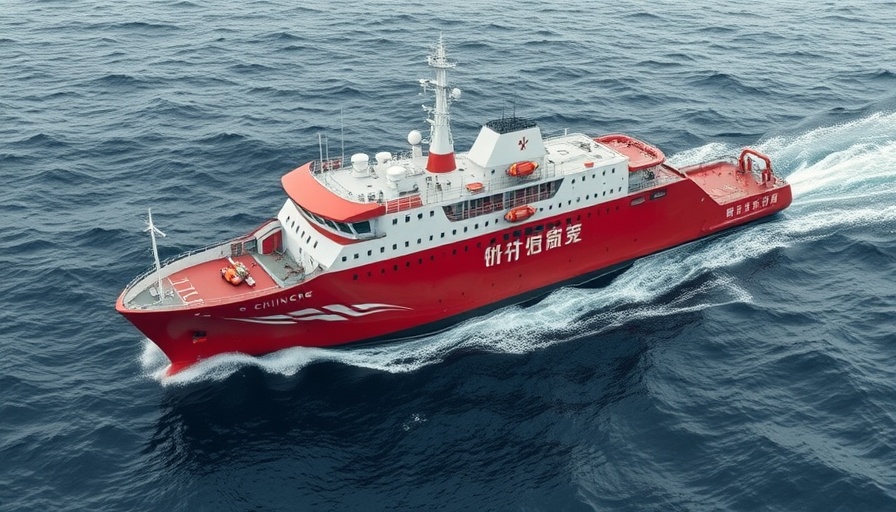
Rising Concerns: China's Growing Interest in the Arctic
The Arctic is fast becoming a focal point of international interest, particularly from China, as indicated by recent activities of Chinese research vessels in U.S. waters. On August 5, the U.S. Coast Guard spotted two Chinese vessels, the Ji Di and the Zhong Shan Da Xue Ji Di, near Alaskan waters, underscoring a troubling trend for U.S. interests in the region. Over the past three years, Chinese research operations have surged, with three vessels operating just last year alone.
Operation Frontier Sentinel: A Shield for U.S. Sovereignty
The Coast Guard's response to these incursions is part of Operation Frontier Sentinel, an initiative focused on safeguarding U.S. territorial waters. The response operations are vital for maintaining sovereignty and ensuring that foreign activities comply with international law. The Coast Guard Cutter Waesche and C-130J Hercules aircraft surveil these waters to thwart potentially hostile activities that could compromise the U.S.'s strategic interests in the Arctic.
Meeting Challenges with New Resources
One of the significant developments in addressing these challenges is the commissioning of new icebreakers, specifically the Coast Guard Cutter Storis, set to enhance the U.S. Arctic presence. This investment is not merely about keeping the sea lanes open; it serves as a declaration of intent, affirming that the U.S. will not cede its Arctic territories to rival nations.
International Cooperation: A Collective Effort
As global competition intensifies, the role of international partnerships is becoming increasingly crucial. The Coast Guard collaborates with various entities, including U.S. Northern Command and Alaskan Command, to monitor foreign vessels continually. By pooling resources and intelligence, these collaborations can ensure effective oversight and defense, thereby reinforcing the United States' maritime strategy.
Looking Ahead: The Future of Arctic Operations
As the Arctic undergoes transformative changes due to climate change and shifting geopolitical landscapes, the demand for vigilance will only grow. The U.S. Coast Guard's commitment to ensuring security and compliance in these waters is a promising sign. But the question remains: how will other nations, particularly China, adjust their strategies in response to increased U.S. assertiveness in the Arctic?
The escalating presence of Chinese research vessels in the U.S. Arctic serves as a warning about the need for continued vigilance and proactive strategies to uphold U.S. interests. Communities living in proximity to these waters would do well to remain informed about the amplified activities in their backyard, as the implications of these developments reach far beyond mere maritime navigation.
 Add Row
Add Row  Add
Add 




Write A Comment